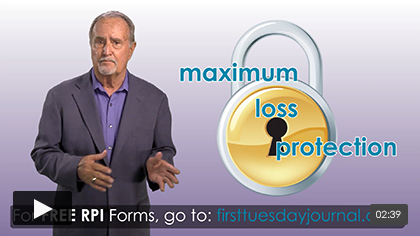The safety clause
Consider a broker employed by a seller under a listing agreement. The listing, whether open or exclusive, contains a safety clause entitling the broker to the agreed fee, when:
- a person has contact with the broker (or their agent) regarding the property during the listing period, called solicitations;
- the broker treats the person as a prospective buyer by providing the person with information about the property, legally called negotiations;
- negotiations with the prospective buyer terminate without resulting in a sale;
- on expiration of the listing period, the broker registers the prospective buyer by name with the seller as a prospective buyer [See RPI Form 122]; and
- the registered prospective buyer and the seller, with or without involving the broker, later commence negotiations within a specified time period following the expiration of the listing, called the safety period, and ultimately complete a sale of the property.
During the listing period, a seller’s agent has contact with numerous prospective buyers. A diligent agent documents their communications with each individual buyer, noting the property information given to them, as well as to any buyer’s agent, on a File Activity Sheet in their listing file. [See RPI Form 520]
The agent also adds each prospective buyer’s name, address and phone number to the list of prospective buyers for the property on an Identification of Prospective Buyers form in the listing file. [See RPI Form 122]
When the listing expires and the property remains unsold, the agent sends the seller the list of prospective buyers on the Identification of Prospective Buyers form they have maintained and closes their client’s file. The list includes all those buyers who, during the listing period, were in contact with and received information about the property from the broker, their agents or through a buyer’s broker. [See RPI Form 122]
A safety clause is located in the fee provision of a listing agreement. It provides an additional period of time after the listing expires for a broker to earn a fee for the time, talent and money the broker and their agent invested during the listing period in their effort to market the listed property and locate a buyer.
The clause preserves the seller’s agent’s expectations of earnings for reviewing the property with prospective buyers during the listing period when the prospective buyers become disinterested, break off negotiations and later reappear after the listing expires to buy the property.
Thus, the broker is assured a fee under the safety clause when:
- the seller’s agent provides property information to prospective buyers during the listing period;
- the seller is notified of the identification of the prospective buyers as soon as possible after termination of the listing [See RPI Form 122]; and
- a prospective buyer named on the list as one the seller’s agent provided information to during the safety period acquires the property.
Perfecting the right to a fee for work done
To collect a fee under the safety clause, the broker has the burden of showing how they perfected their right to the fee.
To perfect the right to collect a fee under the safety clause, the seller’s agent needs to:
- provide information about the listed property to any prospective buyers or the buyer’s brokers in which the seller’s agent has contact;
- document dealings with prospective buyers by maintaining a File Activity Sheet in a listing file [See RPI Form 520]; and
- register the prospective buyers with the seller on termination of the listing by providing the seller with a List of Prospective Buyers in a timely manner (e.g., within 21 days). [See RPI Form 122]
The contents of the forms
An agent or broker uses the File Activity Sheet published by RPI (Realty Publications, Inc.) when engaged in a real estate transaction and when maintaining records for the employing broker’s oversight. It allows the agent or broker to enter information identifying all contacts with the client and others regarding activities transpiring during the agency undertaken. [See RPI Form 520]
The File Activity Sheet is designed in a simple columnar format. A space is included to note the file activity which occurred, the date it was completed and the time spent doing so.
An agent or broker uses the Identification of Prospective Buyers/Tenants form published by RPI to routinely enter the names of all prospective buyers or prospective tenants who, during the listing period, were in contact with and received information about the property from the seller’s broker or their agents. [See RPI Form 122]
The Identification of Prospective Buyers/Tenants form documents:
- which type of agreement the form is an addendum for, either a Seller’s Listing Agreement [See RPI Form 102], an Exclusive Authorization to Lease Property [See RPI Form 110], or another listing agreement [See RPI Form 122 §1]; and
- the identities of the prospective buyers or tenants the broker solicited and negotiated with for the purchase or lease of the real estate. [See RPI Form 122 §2]
Similar to the Identification of Prospective Buyers/Tenants form, the Identification of Qualifying Properties form published by RPI is used by the buyer’s agent when their employment has expired under a listing agreement. It also contains a safety clause calling for the payment of a fee on the client’s purchase within one year after expiration of a property presented to the buyer during the listing period. It allows the agent to identify prospective properties the broker brought to the client’s attention. [See RPI Form 123]
Related video:
This article was originally published June 2013 and has been updated.





















